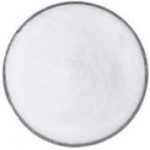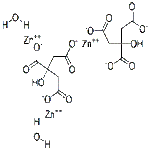CAS Number 5990-32-9 Dihydrate and 546-46-3 Anhydrous, Zinc Citrate Dihydrate Anhydrous USP Grade Manufacturers Exporters







CAS Number 5990-32-9 Dihydrate and 546-46-3 Anhydrous, Zinc Citrate Dihydrate Anhydrous Manufacturer Exporter
For Properties Specifications of Zinc Citrate Dihydrate Anhydrous Click Properties, Specifications of Zinc Citrate Dihydrate Anhydrous Manufacturer.
For Uses of Zinc Citrate Dihydrate Anhydrous Click Uses of Zinc Citrate Dihydrate Anhydrous Manufacturer.
For For SDS MSDS Sheet of Zinc Citrate Dihydrate Anhydrous Click SDS Safety Data Sheet MSDS Sheet of Zinc Citrate Dihydrate Anhydrous Manufacturer.
The Properties and Specifications of Zinc Citrate Dihydrate Anhydrous:
Zinc Citrate USP Grade Specifications.
C12H10O14Zn3-2H2O --- 610.36
2-Hydroxy-1,2,3-propanetricarboxylic acid zinc salt, dihydrate --- CAS 5990-32-9
Anhydrous CAS 546-46-3
Zinc Citrate contains NLT 31.3% of zinc (Zn), calculated on the dried basis.
IDENTIFICATION
A. Identification Tests—General, Zinc: A solution (1 in 10) meets the requirements.
B. Identification Tests—General, Citrate: A solution (1 in 10) meets the requirements.
IMPURITIES
Chloride and Sulfate, Chloride: A 1.0-g portion shows no more chloride than corresponds to 0.7 mL of 0.020 N hydrochloric acid (NMT 0.05%).
Chloride and Sulfate, Sulfate: A 1.8-g portion shows no more sulfate than corresponds to 0.5 mL of 0.020 N sulfuric acid (NMT 0.05%).
Limit of Arsenic, Cadmium, and Lead: Arsenic: NMT 3 µg/g, Cadmium: NMT 5 µg/g, Lead: NMT 10 µg/g.
Loss on drying: Dry a sample at 105C for 2 h: it loses NMT 1.0% of its weight.
Microbial Enumeration Tests: The total aerobic microbial count does not exceed 1000 cfu/g. The total combined yeasts and molds count does not exceed 100 cfu/g.
Microbiological Procedures for Absence of Specified Microorganisms: It meets the requirements of the test for absence of Escherichia coli.
The Uses of Zinc Citrate Dihydrate Anhydrous:
Zinc Citrate is used in dietary supplements as a treatment of zinc deficiency and source of zinc, which is an essential trace element. Zinc citrate demonstrates effective absorption following oral administration. Zinc citrate is used in toothpaste and mouthwash to prevent dental plaque formation and gingivitis. Zinc is also used in chew gum, candies, etc.
The MSDS-SDS Hazard Statement of Zinc Citrate Dihydrate Anhydrous:
Zinc Citrate, Dihydrate or Trihydrate SDS, Safety Data Sheet
MSDS Sheet, Material Safety Data Sheet 31-Jan-23
Section 1: Chemical Product and Company Identification
Product Name & Other Names: Zinc Citrate, Dihydrate or Trihydrate.
CAS Number: 546-46-3
EINECS EC Code: 208-901-2
Chemical Formula: C12H10O14Zn3 (anhydrous)
Molecular Weight: 574.34 (anhydrous)
Relevant uses and uses advised against (if any): Industrial Manufacturing.
Section 2: Hazards Identification
GHS, Globally Harmonized System Classification in accordance with 29 CFR 1910
Classification according to Regulation (EC) No 1272/2008
Not a hazardous substance or mixture according to Regulation (EC) No. 1272/2008.
This substance is not classified as dangerous according to Directive 67/548/EEC.
Labeling according to GHS & Regulation (EC) No 1272/2008
GHS Label Elements NONE |
Signal Word: None
Precautionary statements:
P261: Avoid breathing dust/fume/gas/mist/vapors/spray.
P262: Do not get in eyes, on skin, or on clothing.
P281: Use personal protective equipment as required.
P302+P352: IF ON SKIN: Wash with plenty of soap and water.
P304+P340: IF INHALED: Remove victim to fresh air and keep at rest in a position comfortable for breathing.
P305+P351+P338: IF IN EYES: Rinse cautiously with water for several minutes. Remove contact lenses, if present and easy to do. Continue rinsing.
P337+313: If eye irritation persists get medical advice/attention.
Section 3: Composition and Information on Ingredients
Product Name & Other Names: Zinc Citrate, Dihydrate or Trihydrate.
CAS Number: 546-46-3
EINECS EC Code: 208-901-2
Section 4: First Aid Measures
Always seek medical advice after the first aid treatment.
Skin: Rinse with water. Soap may be used. Seek Medical Aid.
Eyes: Wash eyes with plenty of water for at least 15 minutes, lifting lids occasionally. Seek Medical Aid.
Inhalation: Remove to fresh air. If not breathing, give artificial respiration. If breathing is difficult, give oxygen.
Ingestion: If swallowed, induce vomiting immediately after giving two glasses of water. Never give anything by mouth to an unconscious person.
Section 5: Fire and Explosion Data
Flammability of the Product: Non-flammable in ordinary handling. May be combustible at high temperature.
Products of Combustion: Zinc oxide, Fumes and Oxides of carbon.
Fire Fighting Media and Instructions: Use water spray, alcohol-resistant foam, dry chemical, or carbon dioxide.
Special Information: In the event of a fire, wear full protective clothing and NIOSH-approved self-contained breathing apparatus with full face piece operated in the pressure demand or other positive pressure mode. At high temperatures under fire conditions, it may produce toxic or irritating fumes. Fire-extinguishing work is done from the windward and the suitable fire-extinguishing method according to the surrounding situation is used.
Section 6: Accidental Release Measures
Personal precautions, protective equipment, and emergency procedures: Avoid breathing dust/fumes/gas/mist/vapors/spray. Use individual protective equipment (waterproof boots, suitable protective clothing, safety glasses, etc.). Do not approach facing the wind.
Environmental precautions: Do not let the product enter drains, soil, or water sources.
Methods and materials used for containment Cleanup procedures and Storage: Do not inhale dust, vapors, mist, or gas. Avoid dust formation. Contain spilled material. Cover with an inert, non-combustible absorbent material, (e.g. sand, earth, diatomaceous earth, vermiculite). Use a shovel to put the material into a convenient waste disposal container. Finish cleaning by spreading water on the contaminated surface and allow to evacuate as per law.
Section 7: Handling and Storage
Precautions for safe handling: Apply according to good manufacturing and industrial hygiene practices. Ensure proper ventilation. In case of insufficient ventilation, wear suitable respiratory equipment. Wash thoroughly after handling. Do not drink, eat, or smoke while handling. Avoid contact with skin, eyes, and clothing. Minimize dust generation. Avoid breathing dust/fumes/gas/mist/vapors/spray. Keep container tightly closed. Avoid ingestion and inhalation. Use individual protective equipment (waterproof boots, suitable protective clothing, safety glasses, etc.).
Conditions for safe storage, including any incompatibilities: Store in cool, dry, and ventilated area away from heat sources and protected from sunlight in tightly closed original container. Keep air contact to a minimum. Store protected from heat, sparks and ignition sources and incompatible materials. Avoid contact with skin and eyes. Avoid inhalation of dust/mist/vapor. Do not store with incompatible materials like strong oxidizing agents and acids.
Section 8: Exposure Controls/Personal Protection
Exposure Limits: This product does not contain any hazardous materials with occupational exposure limits established by the region specific regulatory bodies.
Engineering Controls: Use process enclosures, local exhaust ventilation, or other engineering controls to keep airborne levels low.
Ventilation System: A system of local and/or general exhaust is recommended to keep employee exposures as low as possible.
Personal Respirators (NIOSH Approved): For conditions of use where exposure to dust or mist is apparent and engineering controls are not feasible, a particulate respirator may be worn.
Skin Protection: Wear protective gloves and clean body-covering clothing.
Eye Protection: Use chemical safety goggles and/or full face shield where dusting or splashing of solutions is possible. Maintain eye wash fountain and quick-drench facilities in work area.
Other Control Measures: Maintain good housekeeping in work area. Handle in accordance with good industrial hygiene and safety practice.
Section 9: Physical and Chemical Properties
Physical state and appearance: Solid white powder or granules.
Odor: Odorless.
Odor threshold: Not available.
pH (5% soln/water): 5 to 7.
Relative density: Not available.
Melting Point: 295C
Initial boiling point and boiling range: Not available.
Flash point: Not available.
Auto-ignition temperature: Not available.
Decomposition temperature: Not available.
Upper/lower flammability or explosive limits: Not available.
Vapor pressure: Not available.
Vapor density: Not available.
Evaporation rate: Not available.
Flammability (solid, gas): Not available.
Partition coefficient: n-octanol/water: Not available.
Solubility: Very slightly soluble in water.
Viscosity: Not available.
Section 10: Stability and Reactivity Data
Stability: It is stable.
Conditions to Avoid: Heat, Flame, Sparks, other ignition sources and Incompatible materials
Incompatibility with various substances: Heat, light, strong oxidizing agents and acids.
Hazardous decomposition products: Carbon oxides & Zinc oxides are expected.
Polymerization: Will not occur.
Section 11: Toxicological Information
Toxicity to Animals: Oral Rat LD50: Not Available.
Carcinogenicity: No component of this product present at levels greater than or equal to 0.1% is identified as possible or confirmed human carcinogen by IARC, ACGIH, OSHA and NTP.
Mutagenic Effects: Not available.
Developmental Toxicity: Not available.
Reproductive Effects: No information available.
Section 12: Ecological Information
Toxicity to fish: No information available.
Persistence and Degradability: No information available.
Mobility: No information available.
Bioaccumulation/ Accumulation: No information available.
Results of PBT and vPvB assessment: No data available for assessment.
Section 13: Disposal Considerations
Waste Disposal: Waste must be disposed of in accordance with federal, state, and local environmental control regulations.
Section 14: Transport Information
DOT USA, TDG Canada & ADR/RID Europe: Not controlled.
IMDG/IMO: Not controlled.
IATA/ICAO: Not controlled.
Section 15: Other Regulatory Information
USA Regulations:
SARA 311/312 Hazardous Categorization: See section 2.
California Proposition 65: Not listed.
Disclaimer:
**************************
Our company provides this MSDS sheet in good faith but makes no representation as to its comprehensiveness or accuracy. This SDS sheet is intended only as a guide to the appropriate precautionary handling of the material by a properly trained person using this product. The above information has been compiled from various sources and has the possibility of discrepancy and being out-dated information. Individuals receiving the information must exercise their independent judgment and do further search in determining its appropriateness for a particular purpose. In no case shall our company be liable to loss or damages by the product user.
**************************
Anmol Chemicals & Pharmaceuticals Pvt. Ltd. is an off-shoot of Anmol Chemicals Taloja. It is located in MIDC Taloja and it is manufacturing pharmaceutical grades of API, Excepients, Food grade and Reagent grade chemicals. Anmol Chemicals & Pharmaceuticals Pvt. Ltd. is a several decades old group of companies, engaged in manufacturing, supplying, distributing, wholesale supplies for actual users, retail or small pack supplies for research and development chemicals, fine and speciality chemicals, pharmaceutical excipients, mineral fortifiers in chemically pure, Analytical reagent grade, IP BP USP Ph Eur EP JP and other pharmaceutical grade monograph including FCC Food grade chemicals and Nutraceuticals, Mineral Fortifiers at best prices.

Zinc Citrate Dihydrate Anhydrous Structure
CAS Number 5990-32-9 Dihydrate and 546-46-3 Anhydrous, Zinc Citrate Manufacturer Exporter
ANMOL CHEMICALS & PHARMACEUTICALS Pvt. Ltd.
India, USA, Europe, UAE
TELEPHONE: +912223770100
Navi Mumbai, INDIA
e-mail: info(At the rate i.e. @)anmol.org
Copyright. 13-nov-24
We manufacture:
TBHQ Tertiary Butylhydroquinone

